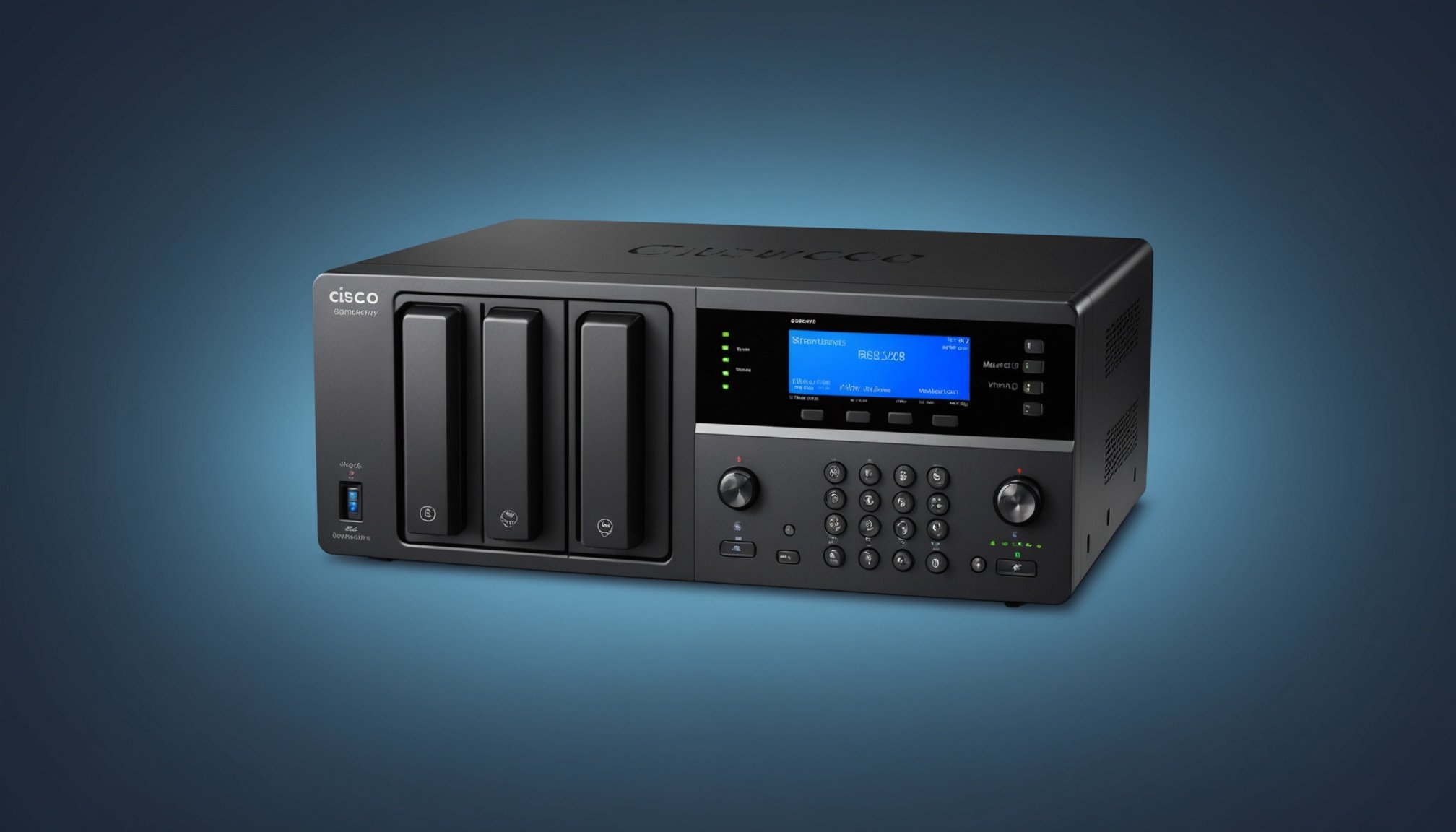Understanding VoIP Systems
VoIP, or Voice over Internet Protocol, is a technology that transforms ordinary voice signals into digital packets, transferring them over the internet rather than traditional phone lines. This approach offers numerous benefits, such as reduced costs and increased flexibility. With the right VoIP technology overview, users can make informed decisions about integrating VoIP into their environments.
A key component is the Cisco SPA112, a handy analog telephone adapter that enables traditional analog phones to use modern VoIP services. By connecting to your existing network, it plays an essential role in facilitating the transition from analog to digital communication. The Cisco SPA112 acts as an efficient bridge for voice communication over digital networks.
In the same genre : Mastering 4k streaming: essential tips to perfectly link qnap ts-451+ nas with plex media server
In conjunction with VoIP technology, the Synology NAS (Network Attached Storage) provides robust support in managing VoIP systems. By using a Synology NAS, users gain functionalities like data storage for call logs, scalability options for future growth, and seamless integration into an existing VoIP setup. The NAS system ensures efficient storage and retrieval of data, enhancing the overall performance and reliability of a VoIP setup.
Preparing for Configuration
When setting up a VoIP system, understanding the setup prerequisites is essential for a smooth installation. Before diving into the configuration, ensure you have the necessary equipment such as a reliable internet connection, compatible routers, and network switches. Hardware compatibility checks are crucial, especially with devices like the Cisco SPA112 and Synology NAS. Verify that your analog phone is compatible with the Cisco SPA112’s analog-to-digital capabilities. For efficient integration, the Synology NAS should have sufficient storage and processing power to handle VoIP data storage and management tasks.
Topic to read : The definitive handbook for enhancing your intel nuc for flawless 4k streaming with kodi
Furthermore, assess the network requirements to support VoIP service. Stable bandwidth and low latency are vital for maintaining clear and uninterrupted communication. Evaluate the current network capacity and whether it can sustain additional VoIP traffic without affecting other services. A high-speed internet connection with a capable router that supports Quality of Service (QoS) can significantly improve call quality.
By ensuring all hardware and network prerequisites are met, you’ll establish a foundation for an efficient VoIP system. This groundwork prevents configuration issues and sets up your system for future scalability and upgrades.
Step-by-Step Configuration of Cisco SPA112
To efficiently set up your Cisco SPA112, understanding the VoIP device setup essentials is crucial. Begin by accessing the device’s web interface to log in. This involves connecting the SPA112 to your network and using a web browser on an attached computer to enter the IP address displayed on the device.
Accessing the Cisco SPA112 Interface
Once you’ve accessed the interface, familiarise yourself with the layout of the configuration settings. A coherent layout ensures you can identify and modify necessary options promptly. Remember, keeping the SPA112’s firmware up-to-date enhances stability and security, maximising your device’s longevity.
Configuring Basic Settings
Next, configure the network and SIP settings which are vital for routing calls correctly. Enter your phone line’s specific settings along with registration details. This configuration ensures the SPA112 effectively bridges your analogue phone to the digital VoIP network. Once configured, test the phone line to ensure everything functions as intended.
Advanced Configuration Options
The SPA112 also offers advanced features like call forwarding and voicemail that can be tailored to suit your needs. In the event of configuration issues, troubleshooting resources are available to resolve these problems. Lastly, applying security settings within the interface can significantly improve your system’s VoIP performance.
Integrating Synology NAS into the VoIP System
Synology NAS configuration plays an essential role in enhancing VoIP storage and data management. Let’s explore the steps for integrating it into your VoIP system.
To start, install necessary applications on Synology NAS for handling VoIP-related data. These applications are pivotal for organising and storing call recordings, logs, and ensuring VoIP storage efficiency. For instance, optimise data retrieval speed by configuring proper storage paths and indexes.
Setting up data storage for call logs and recordings requires detailed planning. Here’s how:
- Allocate dedicated storage for VoIP data to prevent software conflicts.
- Consider redundancy and data integrity with RAID configurations.
Beyond storage, managing backups for VoIP configurations and data becomes indispensable. This involves:
- Regularly scheduling automated backups to external drives, ensuring data safety.
- Verifying backup integrity frequently to avoid data loss.
Incorporating these strategies into the setup of a Synology NAS significantly boosts data handling efficiency. This integration, paired with appropriate Synology applications and secure backup solutions, ensures a reliable and streamlined VoIP data management experience.
Optimizing VoIP Performance
To ensure seamless VoIP performance, prioritising Quality of Service (QoS) settings in your network is crucial. QoS allows for allocating bandwidth effectively, ensuring superior call quality even under network strain. Implementing QoS on routers can help prioritise VoIP traffic, minimising disruptions during calls.
Monitoring network performance is equally essential. Regular checks on bandwidth usage prevent congestion, ensuring a stable connection for reliable communication. By leveraging monitoring tools, you can analyse network traffic and identify potential bottlenecks before they affect call quality.
To maintain a steady VoIP connection, adopt practices that enhance reliability. Here are some key measures to consider:
- Position your network hardware strategically to reduce signal interference.
- Regularly update network devices to benefit from the latest security and performance enhancements.
- Ensure wired connections are secure and inspect them periodically for wear and tear.
Consistently applying these strategies can greatly improve the performance and reliability of your VoIP system. By focusing on network management and adopting best practices, you can create an environment that supports high-quality voice transmission and maximises the advantages of VoIP technology.
Troubleshooting Common Issues
VoIP troubleshooting is essential for maintaining seamless communication, especially when issues with connectivity or the Cisco SPA112 arise. Begin by identifying typical VoIP issues, such as call dropouts or poor audio quality. Symptoms often include audio distortion, latency, or connection failures.
Identifying Common Problems
Using diagnostic tools effectively helps isolate and resolve connectivity problems. The stepwise troubleshooting approach for the Cisco SPA112 involves checking cable connections and ensuring correct SIP settings. Verifying the power status and network connection is crucial.
Resolving Network Related Issues
To resolve network-related issues, address NAT and firewall conflicts, which often affect VoIP performance. Adjust router settings to support VoIP, ensuring that Quality of Service (QoS) is configured properly. Device placement and network layout significantly impact connectivity, so position your equipment to reduce interference.
Support Resources
For comprehensive support, access manufacturer options for Cisco and Synology. Community forums and user groups can provide additional insights and shared experiences. When seeking help, documenting problems accurately can streamline your resolution process. By following these guidelines, you’ll improve VoIP performance and maintain reliable communications.
Best Practices and Future Considerations
Ensuring effective VoIP systems management requires ongoing attention to system maintenance and upgrades. Regular maintenance is vital for performance optimization. This involves periodically checking network settings and server configurations to prevent downtime. Keeping both the Cisco SPA112 and Synology NAS firmware updated enhances security and functionality, aligning them with the latest VoIP technology updates.
Conduct routine inspections of network security measures. A reliable firewall setup and encrypted data paths protect against unauthorized access. Plan for potential network expansions or increased call traffic by evaluating current capabilities and anticipating future needs. Evaluate scalable solutions, including additional NAS storage or more robust network equipment, to accommodate growth.
Contemplate future upgrades to boost scalability and system resilience. Consider emerging VoIP technology advancements and how they can enhance your setup. As new features become available, assess whether they align with business goals. Staying informed about evolving VoIP standards helps adopt innovations that can drive productivity.
By prioritizing these best practices, organizations can ensure their VoIP systems remain robust, secure, and ready to adapt to future demands. A proactive approach to maintenance and upgrades supports a stable and efficient VoIP setup over time.











